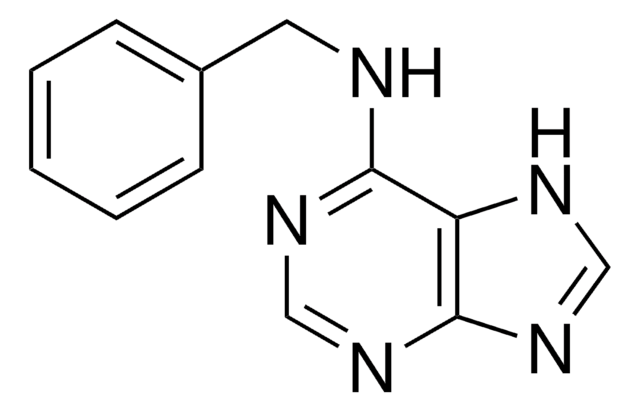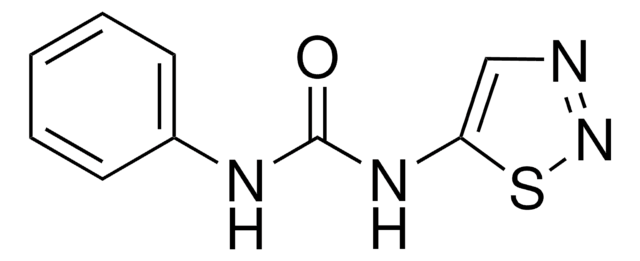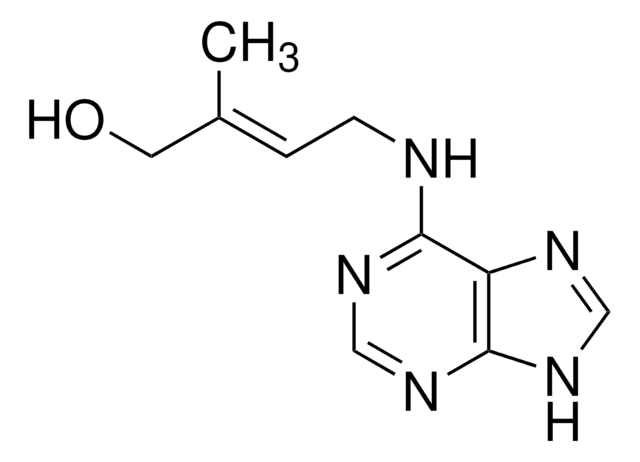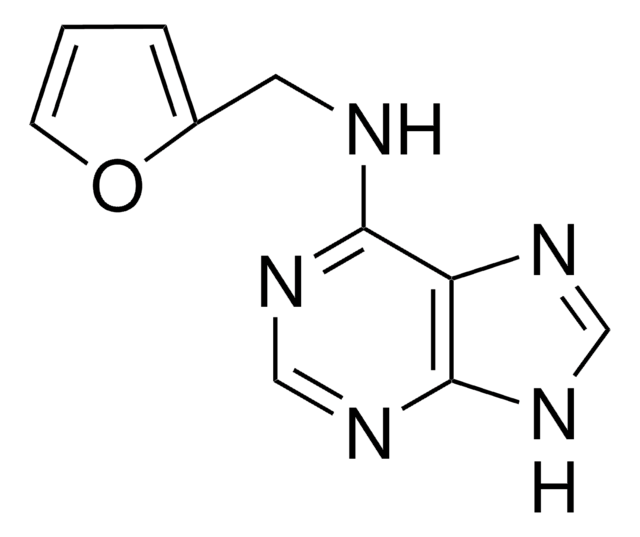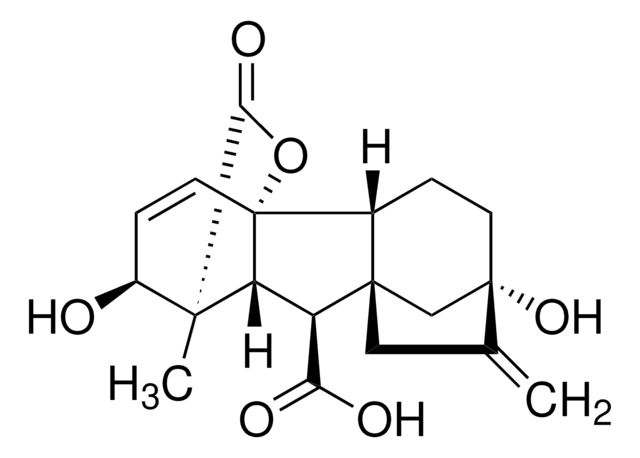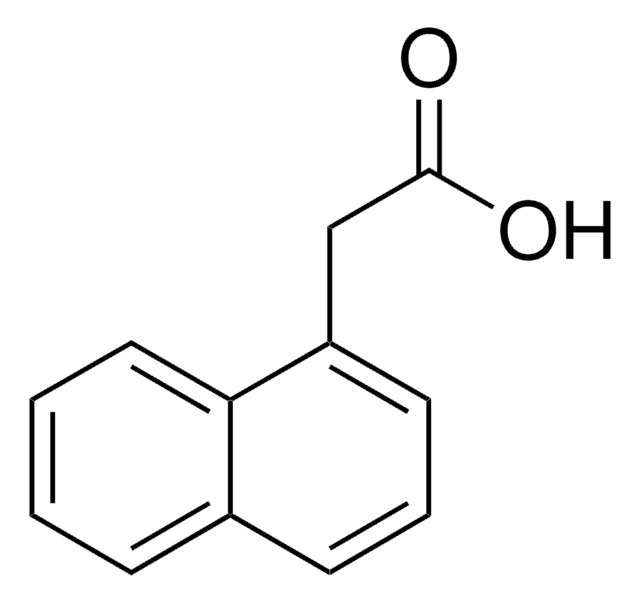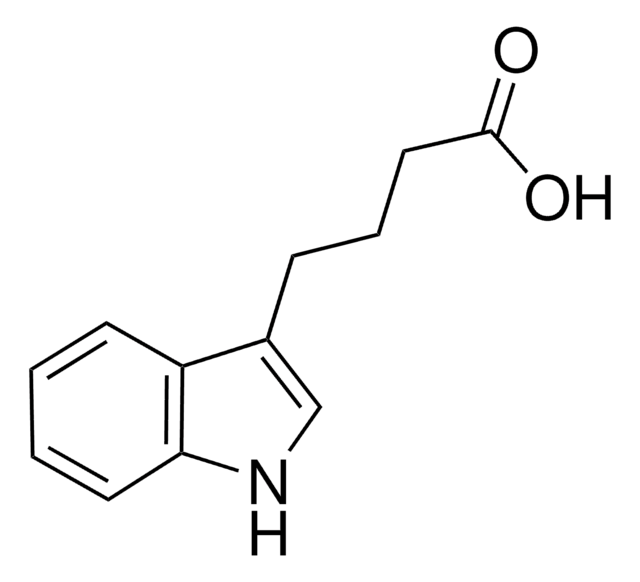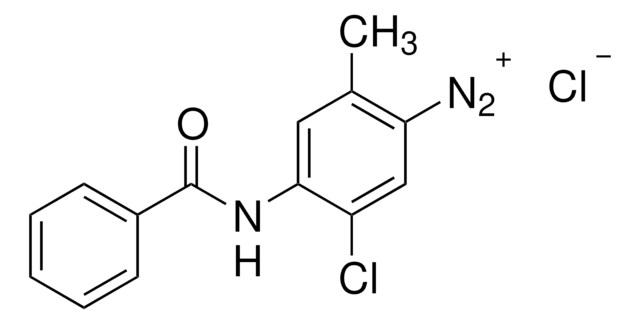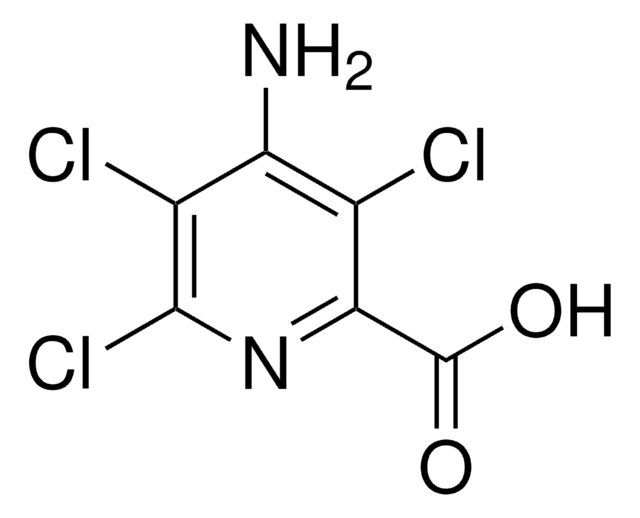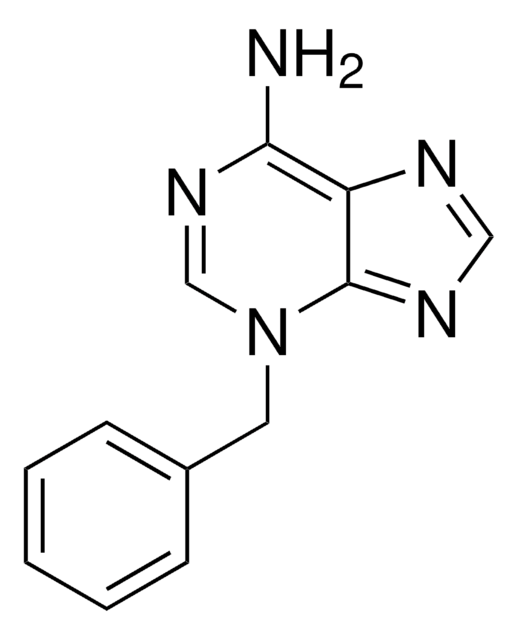P6186
Thidiazuron
BioReagent, suitable for plant cell culture
Sinónimos:
1-Phenyl-3-(1,2,3-thiadiazol-5-yl)urea, TDZ
About This Item
Productos recomendados
Línea del producto
BioReagent
Nivel de calidad
Formulario
powder
técnicas
cell culture | plant: suitable
aplicaciones
agriculture
cadena SMILES
O=C(Nc1ccccc1)Nc2cnns2
InChI
1S/C9H8N4OS/c14-9(12-8-6-10-13-15-8)11-7-4-2-1-3-5-7/h1-6H,(H2,11,12,14)
Clave InChI
HFCYZXMHUIHAQI-UHFFFAOYSA-N
¿Está buscando productos similares? Visita Guía de comparación de productos
Aplicación
- as a component of the proliferation medium to test its effect on the proliferation of embryo-like structures obtained from the post-culture of shoot tips
- as a growth regulator in Murashige and Skoog (MS) media to culture the nodal segments of Hyssopus officinalis L. seedlings
- as a cytokinin in induction media to experiment with the hormonal composition
Acciones bioquímicas o fisiológicas
Envase
Palabra de señalización
Warning
Frases de peligro
Consejos de prudencia
Clasificaciones de peligro
Aquatic Acute 1 - Aquatic Chronic 1 - Eye Irrit. 2 - Skin Irrit. 2 - STOT SE 3
Órganos de actuación
Respiratory system
Código de clase de almacenamiento
11 - Combustible Solids
Clase de riesgo para el agua (WGK)
WGK 3
Punto de inflamabilidad (°F)
Not applicable
Punto de inflamabilidad (°C)
Not applicable
Equipo de protección personal
dust mask type N95 (US), Eyeshields, Faceshields, Gloves
Elija entre una de las versiones más recientes:
¿Ya tiene este producto?
Encuentre la documentación para los productos que ha comprado recientemente en la Biblioteca de documentos.
Los clientes también vieron
Nuestro equipo de científicos tiene experiencia en todas las áreas de investigación: Ciencias de la vida, Ciencia de los materiales, Síntesis química, Cromatografía, Analítica y muchas otras.
Póngase en contacto con el Servicio técnico